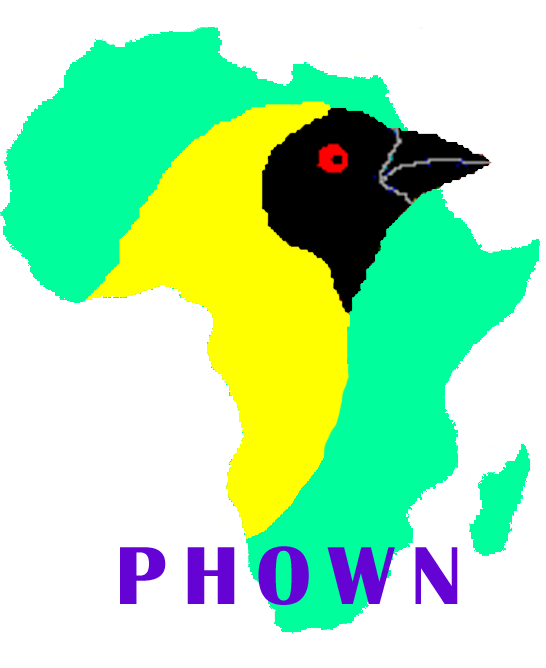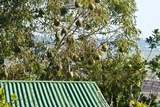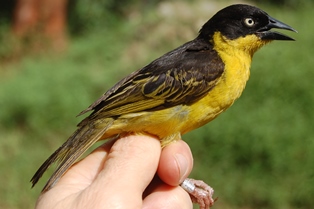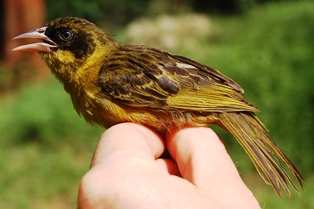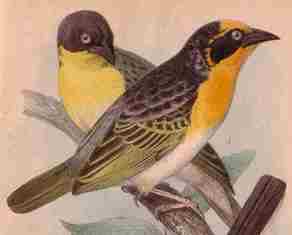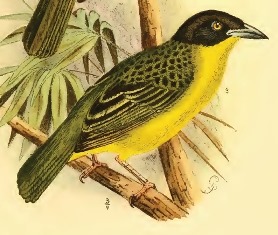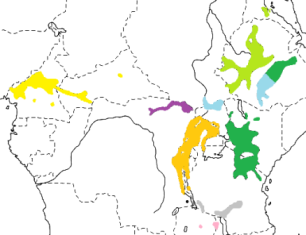Weaver species
Choose different species from drop-down list and press 'Go' button. See Full species list.Baglafecht Weaver Ploceus baglafecht
IUCN: Least concern Discovery: 023Categories: acacias, fruit, gum, nectar, palm, Ploceus 3,
News items about species
Discovery
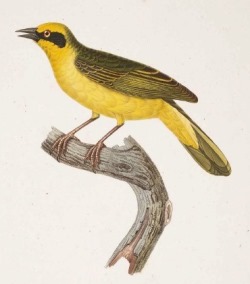
figure from Ferret & Galinier 1848 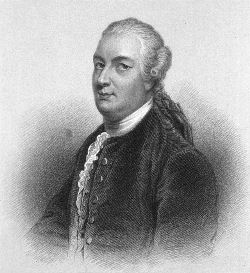
the Baglafecht Weaver, figure from wikipedia 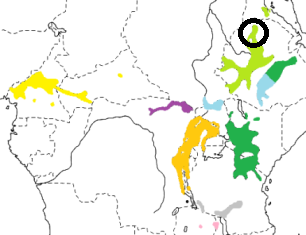
distribution, type locality circled IntroductionThe Baglafecht Weaver was formally described by Francois Marie Daudin, a young French zoologist. For this species Daudin simply provided a scientific name for a bird described by Buffon.The earliest reference to the Baglafecht Weaver is by Buffon in 1775, where he called it Le Baglafecht. Buffon provided a brief description of the species and noted that it came from Abyssinia (Ethiopia). The Baglafecht Weaver was most probably noted by James Bruce, a Scottish traveller in North Africa and Ethiopia. Bruce travelled in Africa from 1768 to 1773, and later wrote some travel books. Bruce, and his assistant Luigi Balugani, painted over 300 plants, birds, and animals, but did not write much about the new fauna and flora he found. Murray, who wrote a biography on Bruce (1808), mentioned a painting of a bird called the yellow Bagla finch. Bruce met Buffon in France in 1773, and the painting by Bruce must have been the source for Buffon's description of the Baglafecht Weaver. Bruce was based mostly at Gondar, which is probably where he observed the Baglafecht Weaver. Bruce's painting of the Baglafecht Weaver probably exists in a gallery, but it does not appear to have been published anywhere. The first published illustration of the Baglafecht Weaver appeared many decades after the bird was first described. Ferret and Galinier 1848 published several hand-coloured plates in their book on Ethiopia, including one of the Baglafecht Weaver. Scientific citationLoxia baglafecht Daudin 1802 In Buffon, Hist. Nat., ed. Lace'pe`de, Quad., 14, p.245 Abyssinia, ex idid., Oiseau Rev. Franc. Orn., 6, p.191.Meaning of namesbaglafecht Probably from a native Abyssinian (Amharic) name. Bruce refers to Bagla as a language or tribe. Buffon first used the name "baglafecht", and this must be based on his meeting with Bruce.First English nameyellow Bagla finch (Bruce 1791)Alternate namesElgon Weaver, Emin's Weaver, Frick's Weaver, Golden-Crowned Weaver Bird, Lado Baglafecht Weaver, Neumann's Bagafecht Weaver, Reichenow's Weaver, Stuhlmann's Weaver, Uhehe Stuhlmann's Weaver.CollectorJames Bruce.Date collected1768-73, when Bruce was in Ethiopia.Locality collectedEthiopia, probably in Gondar.Type specimensType specimen not traced. |
The above is based on Weaver Wednesday 2, a weekly series about the discovery of each weaver species.
This species text first appeared as
Weaver Wednesday [140] - Discovery [23]: Baglafecht Weaver on 2015-02-17
1. Basic biology
Identification. The Baglafecht Weaver Ploceus baglafecht has the widest plumage variation of any weaver species. All subspecies and sexes have a yellow eye and black face, and yellow or green wing edgings. Juveniles are generally duller versions of the female, and have dark eyes. Distribution.
The subspecies differ mainly in the colour of the male's head (yellow or black crown) and upperparts (green or black). Some subspecies have seasonal plumage changes. Eight subspecies of the Baglafecht Weaver are recognised (see map left, based on Birds of Africa):
Habitat. The Baglafecht Weaver inhabits forest clearings and open vegetation outside of forest, including gardens in cities. It is often found in small parties, otherwise singly or in pairs, but never in large flocks. Food. The Baglafecht Weaver feeds mainly on insects, and also on seeds and plant matter, including fruit. It feeds on nectar by dipping the bill into open flowers and swallowing droplets. The Baglafecht Weaver probes clusters of dry leaves, searching for insects, and gleans leaves and branches. The young are fed on spiders, moth larvae, grasshopper nymphs, small crickets, mantids, beetles, termite alates, and winged ants.
Breeding. The Baglafecht Weaver is a monogamous, solitary nester. It is usually highly territorial, but sometimes two pairs nest in the same area. The nest is oval, without a spout, slightly flattened below, with the entrance well up one side, and an internal ledge to prevent eggs from falling out. The nest is thick-walled, and rather coarsely woven of strong strips of green grass blades or grass stems. The nest is lined by both sexes, using grass seedheads, feathers and plant down. The nest lining may project as a porch over the entrance. Nests are suspended below branches or palm fronds, and leaves are not stripped around nests, so that they are concealed. Successive nests may be built at the same site, so that several are present but only one is used for breeding, and the male may roost in an unlined nest. The female incubates the eggs. Initially only the female feeds young, but from about the 4th day the male helps feed. Few predators have been recorded, but monkeys have been seen raiding nests (read here). |
The above is based on Weaver Wednesday, a weekly series about weaver species.
This species text first appeared as
Weaver Wednesday [99]: Baglafecht Weaver on 2014-05-07
2. Breeding facts
| Pair bond Monogamous Breeding season Aug-Nov in Cameroon; in DRCongo, Mar-Jun in Kivu, May in Ituri and Aug-Oct in Uele; Jul and Nov in Sudan, Mar-Oct (possibly also Jan-Feb) in Ethiopia, Dec in Rwanda; in Uganda, Oct-May in Kampala area and reports in Aug and Jun-Jul on Mt Elgon; peak Apr-Jun (and in Nairobi area all months except Aug) in Kenya, and all months except Aug-Sept at Arusha in Tanzania; Oct-Dec in Zambia and Oct-Feb in Malawi Nest site 1.8-10 m (mostly 3-6 m) above ground, suspended by grass stems looped around branch, or attached to banana leaves with supporting loops threaded through leaf blades, often in acacia (Acacia), sometimes in palm or even in exotic pine (Pinus) or eucalypt (Eucalyptus) Nest building woven by male, female may accompany male and help to select nest-site but does not contribute to building (although captive female did assist male at this stage); later nest lined by both male and female Colony size Solitary nester, usually highly territorial, but sometimes two pairs nest in same area; will build several nests at one site Clutch size 1-3 eggs Egg colour of two types, blue-green and either plain or blotched with dark brown (especially at thicker end), or white to pinkish, evenly covered with reddish-brown spots and blotches Egg size average size of twelve eggs 21.2 x 15.1 mm (Ethiopia) Incubation incubation by female only, male often perched nearby, period 11-12 days, in estimated at 15 days Chicks and nestling period chicks initially fed by female alone, from fourth day also by male, period 15-17 days, in captivity 17-19 days |
Breeding information based on Handbook of the Birds of the World, Vol. 15.
3. Photos of Weaver Nests
 Vm 30676 |  Vm 30238 |  Vm 30105 | 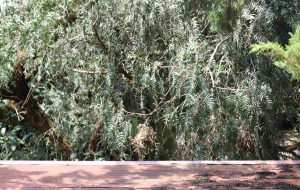 Vm 30102 |  Vm 29088 |  Vm 28051 |
Thumb-nails of most recent PHOWN records - click on one to see its full record
See all PHOWN records for this species here.
PHOWN (Photos of Weaver Nests) provides valuable info on breeding distribution and colony sizes of weavers.
You can contribute by registering and submitting photos at Virtual Museum webpage.
4. Breeding distribution
Google map showing distribution (For species with small ranges you need to zoom in at the correct area to see the range):
yellow blob - range of weaver species; read more about this here.
![]() - PHOWN records with photos
- PHOWN records with photos
![]() - PHOWN records with no photos (Nest Record Cards, other records)
- PHOWN records with no photos (Nest Record Cards, other records)
![]() - Birdpix records
- Birdpix records
![]() - comments on out of range records, or interesting records
- comments on out of range records, or interesting records
![]() - type locality
- type locality
CLICK on the marker on the map to see individual record details.
5. Range changes
Not South African speciesThe above is based on Weaver Wednesday 3, a weekly series about range changes in South African weaver species.
This species text first appeared as
n/a







